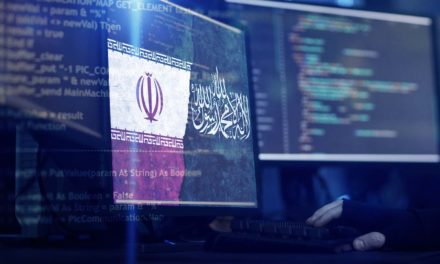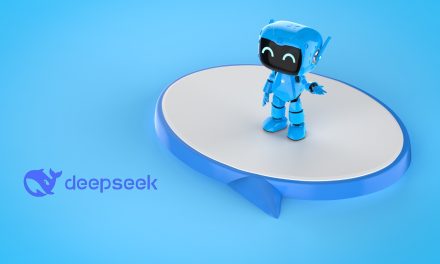How far would you trust AI in critical high-stake sectors such as defense, aerospace or cybersecurity, where failure is often not an option?
The phrase “failure is not an option” reflects a determined mindset emphasizing resilience, resourcefulness, and a refusal to accept defeat, most famously associated with NASA Flight Director Gene Kranz and the Apollo 13 mission.
Although widely attributed to Kranz, the exact phrase originated in preparation for the 1995 movie Apollo 13. While often linked to Kranz, the phrase was actually coined by flight controller Jerry Bostick in 1995. However, Kranz himself did write a memoir titled Failure Is Not an Option, published in 2000.
This phrase has often become a rallying cry for resolute determination in high-stake projects, suggesting that we must find a way to succeed no matter the obstacles. Not everybody agrees, as seen in a quote attributed to Elon Musk: “Failure is an option here. If things are not failing, you are not innovating enough.”
While not allowing failure to be an option is often criticized as rigid and authoritarian in leadership and management in many sectors – especially by stifling creativity and innovation – the phrase’s origin is rooted in the high-stake environment of space exploration, where the cost of failure was too great to accept.
So, what happens now that AI is core to many systems across all industries? Is it a bane or boon to high-risk sectors such as aerospace, defense or even cybersecurity?
According to the Boston Consulting Group (BCG), for aerospace and defense (A&D) companies aiming to stay competitive, the urgency to capture value from AI is clear – but so is the need for strategic foresight.
According to BCG: “Most A&D firms have launched AI efforts, but many haven’t translated those investments into real value. A recent BCG survey found that 65% of A&D AI efforts are still only in the proof-of-concept phase. Only one in three is improving the business in measurable ways.”
The report emphasized that getting better results from AI requires a different approach: companies need to make strategic decisions about how and where they will invest in the technology, informed by the practices already in place at top-performing organizations in A&D and other sectors.
The role of AI
The benefits of employing AI in these sectors are many, especially where it comes to saving lives, cost and resources.
In defense, AI improves situational awareness and decision-making, enabling autonomous systems and optimizing logistics, to enhance performance while reducing manpower cost, errors and loss.
In aerospace, it enhances flight safety, optimizes flight paths and air traffic control, and facilitates predictive maintenance for better aircraft readiness. This is a critical life-saving aspect of AI technology.
In cybersecurity, AI detects and responds to cyberthreats, automates security tasks, and predicts attacks to safeguard critical data and infrastructure.
Dr Marko Erman, Senior Vice-President & Chief Scientific Officer, Thales, said: “In mission-critical environments, where milliseconds matter and stakes are high, AI must deliver levels of reliability, transparency and trust that surpass those of commercial systems.”
He explained: “Failures in areas such as defense, aerospace or cybersecurity can undermine public trust, disrupt economic stability, or even affect diplomatic balance.”
The human-AI balance is most critical in such environments.
“At Thales, we believe AI should always complement, not replace, human expertise. In situations where lives are at stake, humans must remain at the center of decision-making,” Dr Erman emphasized.
For instance, Thales’ Singapore Avionics Asia-Pacific Industrial Centre is piloting an intelligent system that helps technicians save valuable time previously spent manually reviewing safety tests for flight equipment.
“Built with strict human oversight, the system has already improved fault detection and productivity, and we plan to replicate this success across our global avionics network.”
Dr Erman provided two other examples where AI helps in the aviation industry:
In the area of air traffic management, AI has a role to play in the safe and timely sequencing of flights, helping reduce travel delays and optimizing airlines’ carbon footprints for a more sustainable aviation future.
In dense urban environments, AI can enhance the performance of a radar to differentiate drones from birds, a critical element now with the proliferation of unmanned objects in the airspace.
Navigating the path ahead
According to BCG, capturing real value from AI technology requires a different approach:
- Competitive advantage lies at the top of the AI stack — not from foundational infrastructure and data but from user-facing applications. Companies should refocus their investments in this area, particularly in cloud-based solutions.
- Off-the-shelf solutions can work well for support functions, but for mission-critical areas, A&D firms should build custom AI systems tailored to their unique mission, focusing on a handful of solutions that matter most.
- Rather than trying to build and retain large internal AI teams, firms in such high-stake sectors should scale smarter — with lean internal teams focused on governance and core solutions and working with trusted partners that can get solutions in place faster.
“Looking ahead, we must ensure that AI recommendations remain valid, explainable, and actionable in real-time,” Dr Erman added, emphasizing the need to work with trusted partners with a proven record of upholding the highest standards of safety, security and performance.

















